When the Toronto Blue Jays added Marcus Semien to their infield on a one-year, $18 million contract, it was clear they were getting an impact player.
His defence, in particular, should be a boon to a Blue Jays team that hasn’t fielded the ball well in recent years. In the last three seasons, his UZR of plus-17.1 ranks 11th among all position players, and his DRS of plus-21 comes in at 14th. All of those numbers came at shortstop. It’s fair to expect him to shine at second base, which is significantly less demanding.
What’s not entirely clear is what the Blue Jays are going to get from Semien offensively. The former Oakland Athletic has been consistently below average at the dish with a pretty notable exception in 2019 — a season where he put up 7.6 WAR and came third in MVP voting.
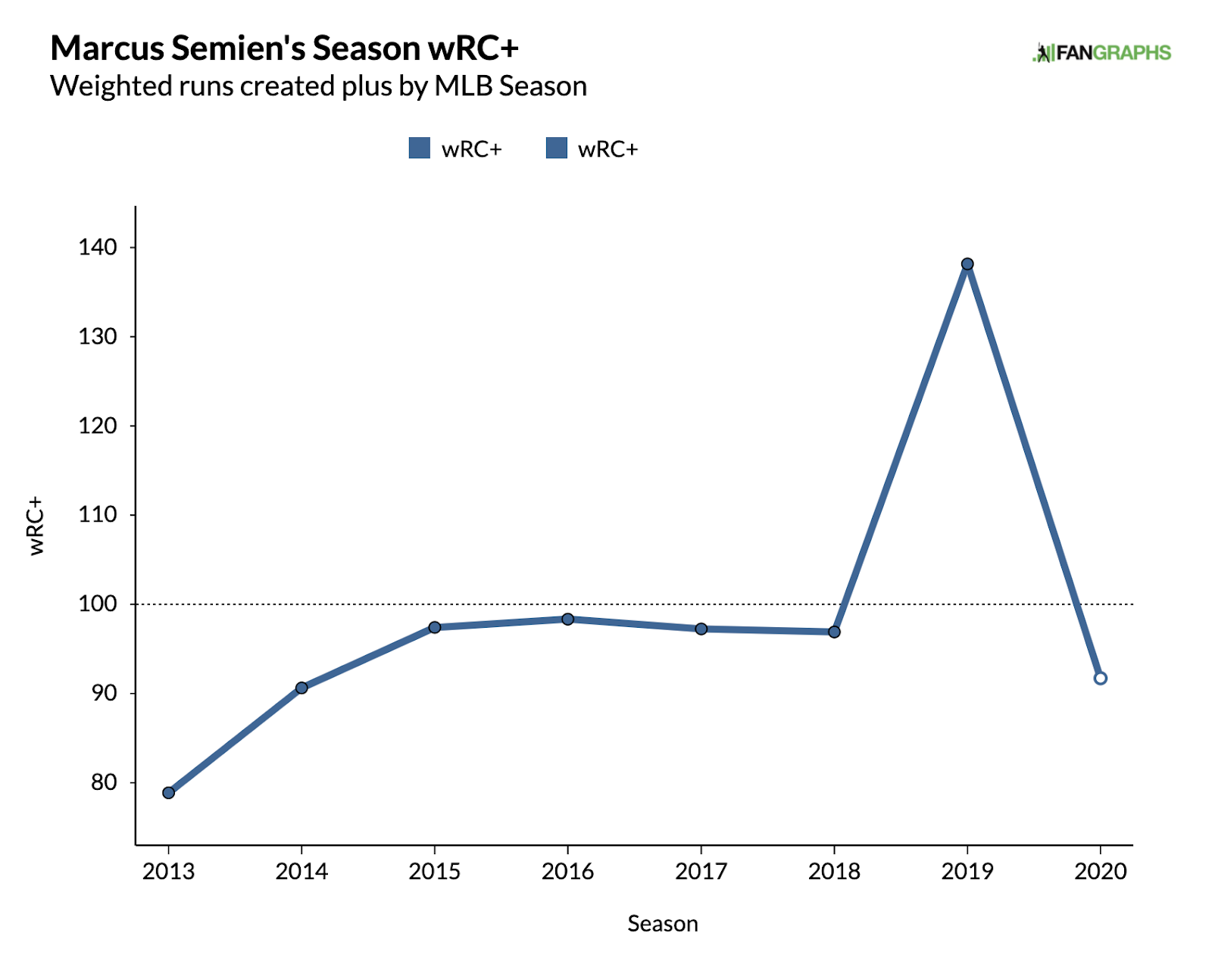
It’s pretty easy to look at this chart and assume that 2019 was a complete fluke and 2020 represented a return to established form. That may well prove to be the case, but it’s far from a forgone conclusion.
It’s also plausible that the breakout Semien managed in 2019 was simply interrupted by a chaotic 2020 and this year he’ll pick up where he left off — or at least produce at an above-average clip once more.
If that’s the case, the Blue Jays’ investment will pay off handsomely, but it will take Semien addressing a few of the issues he experienced last year.
Here are some ways Semien can bounce back:
Pick up where he left off
This is the least scientific thing on Semien’s to-do list for a return to his 2019 heights, but it is worth noting that he started the season in a major slump that crippled his year-long numbers, and hit well from that point on.
Semien played in 60 games in 2020, including the playoffs. Here’s how they break down in 30-game chunks:
First 30 Games: 7.2 BB%, 23.2 K%, .219 AVG, .275 OBP, .352 SLG
Last 30 Games: 14.7 BB%, 14.7 K%, .273 AVG, .380 OBP, .473 SLG
These numbers shouldn’t tell us that the first half of the season means nothing and the second half is a definitive indicator of where he’ll be in 2021. However, they do tell us that when we’re talking about Semien’s unimpressive offensive performance in 2020, we’re really talking about approximately a one-month slump.
“I came back to summer camp, and had a slump in the middle of summer camp that I brought into the season for the first two weeks,” Semien told reporters of his rough start in his introductory press conference Tuesday. “Those things happen over the course of a long season, but when it’s in the beginning and you know it’s only a 60-game season it kind of stresses you out a little bit more.”
When the veteran says “those things happen over the course a long season” he’s exactly right. Even in the midst of his stellar 2019 he had an extremely similar rough 30-game stretch. His worst OPS in a 30-game span that season was .591. In 2020 his worst was .590.

Not only did his early season slump fall within a normal range, it was compounded by an injury the shortstop played through.
“I started getting in the cage a little bit more and I hit myself into a side injury just trying to figure everything out and get my swing right,” he said. “That was a big chunk of the 60-game season just fighting through that.”
That combination of factors made it very difficult for Semien in the early going, and helps explain how he finished strong.
“Once I got healthy things picked up,” he said. “I wish the season kept going because I knew I was heading in the right direction.”
Don’t fall in love with the home-run ball
Although the narrative arc of Semien’s season can account for some of his struggles, he experienced a few other issues that require addressing for him to return to offensive difference-maker status.
The first is how home run-happy Semien’s swing got in 2020. After his breakout year, the veteran seemed to embrace an uppercut swing designed for elevation. While he successfully posted a career-high launch angle (19.3), his batted balls in the air weren’t particularly dangerous. In fact, he set a career high in infield fly rate (16.0 per cent) and saw his HR/FB drop significantly from 2019.

That was a troublesome combo that showed up particularly on high pitches. In 2019, his exit velocity by zone looked pretty balanced.
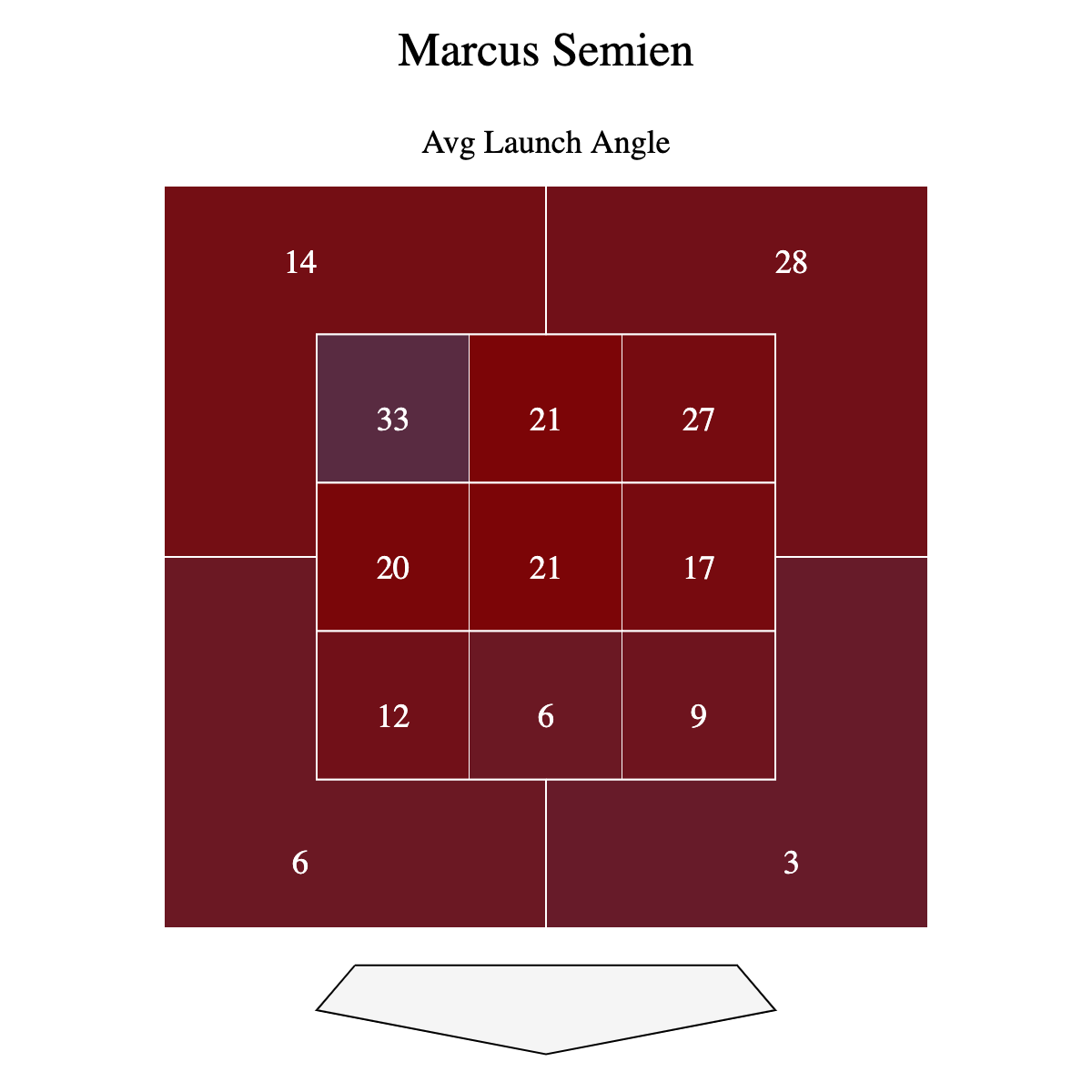
In other words, it wasn’t unusual for him to take a high pitch and hit it squarely, like he did on this 102.7 m.p.h. home run off Griffin Canning.

Last year, however, he was unable to stay on top of pitches high, particularly high-and-inside. As his exit velocity zone chart shows, that led to a lot of sky-high flies off his bat.
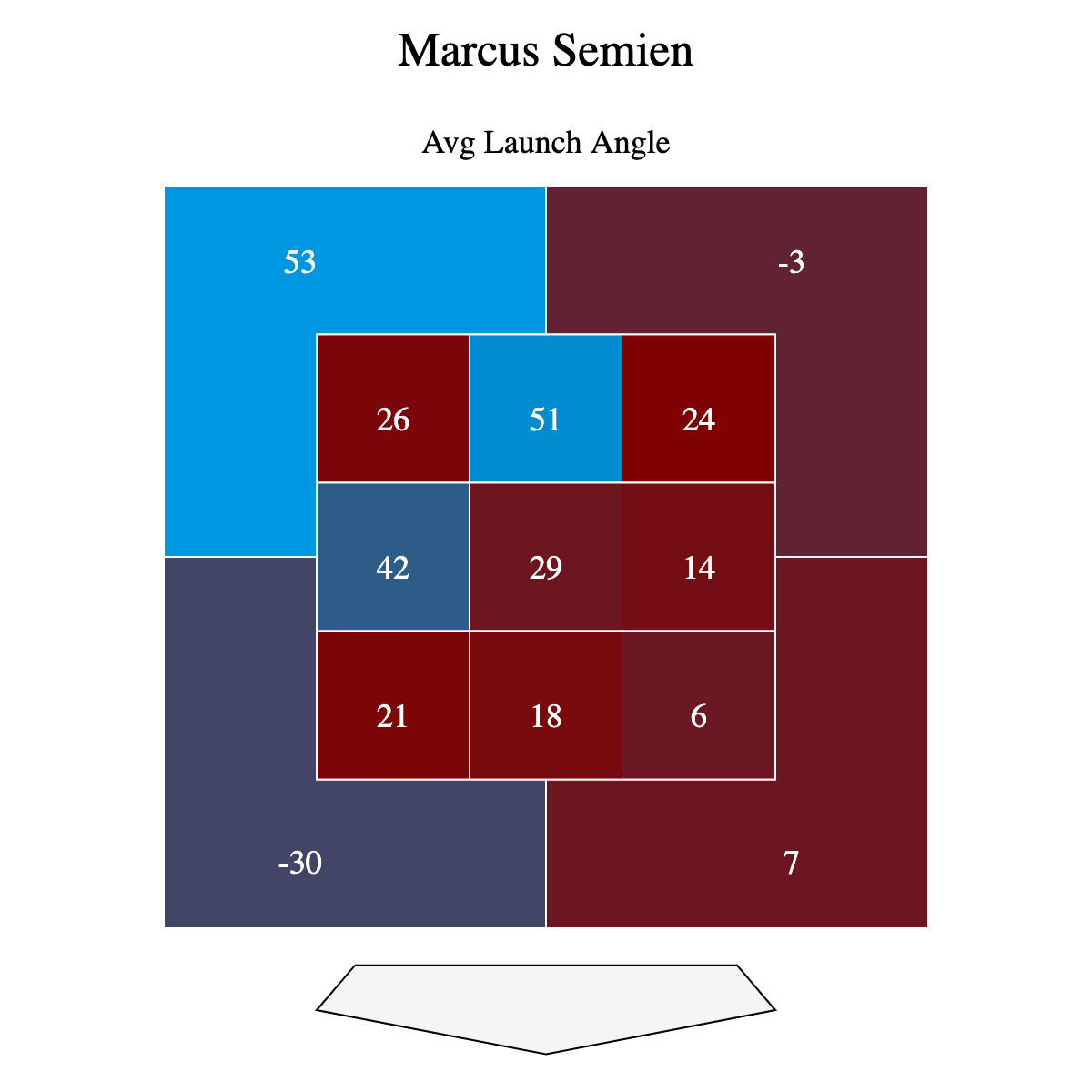
Not only did that result in an inflated popup total, even when he connected on these pitches, there was often too much air under them, like there was on this can of corn off Mike Minor.
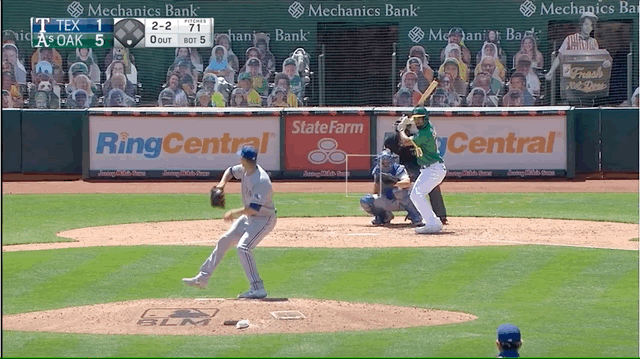
It’s a pretty similar phenomenon to what happened with Travis Shaw in 2019, albeit to a lesser extent. After a big power season, it’s easy for a hitter to overcommit to elevating the ball, and Semien — whose raw power is more solid than world-class — is probably better suited to a balanced line-drive focused approach.
Close the down-and-in hole
One of the more inexplicable things to happen to Semien at the plate in 2020 was a massive hole opening in his swing down-and-inside. That’s not a great place for anyone to hit, but it became extremely exploitable for the shortstop, accounting for 24 per cent of his strikeouts.
We’re dealing with small samples here (12 strikeouts), but for context, in his 162-game 2019 campaign he only struck out in that region of the zone six times. In his seven years prior to 2020, that location only accounted for 9.3 per cent of his Ks.
To make this a little bit weirder, eight of those 12 down-and-low Ks came in a seven-day span between Aug. 1 and Aug. 8. During that time, it didn’t matter whether it was the hard stuff ...

... or soft breaking balls ...
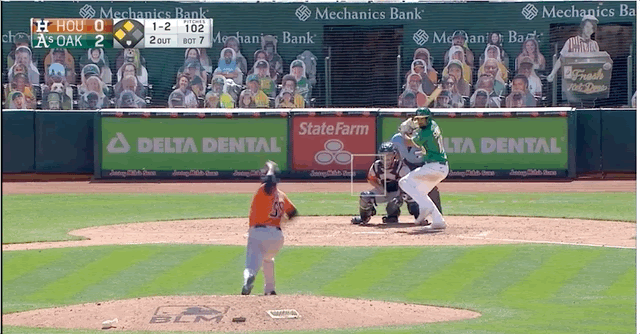
... Semien was taking ugly swings.
These are the types of things that can happen in the midst of a slump. Semien lost a part of the zone that hadn’t traditionally been a problem for him. That showed up on video, and pitchers were ready to victimize him.
It’s a silly little thing, really, but if he’d struck out in this location at his career rate, his K percentage for the season would’ve dropped to 17.6 per cent, an excellent number which would’ve been in line with his 2019 breakout. Instead, his strikeouts rebounded after he’d made enormous progress in that area the two previous seasons.

Oddities like this can derail production in a small sample, as can an injury — even if it’s relatively minor — or just a slump. Like a pretty large percentage of the humans on this planet, Semien had a year to forget in 2020.
That doesn’t mean he’s doomed to repeat it. While another MVP-calibre year might not be a fair expectation, Semien’s 2019 shouldn’t be discarded as an aberration that tells us nothing. If he can avoid some of last season’s pitfalls, 2020 could go down as the outlier.
